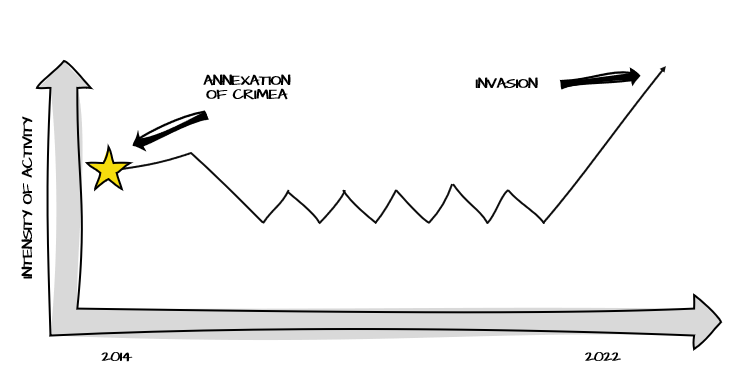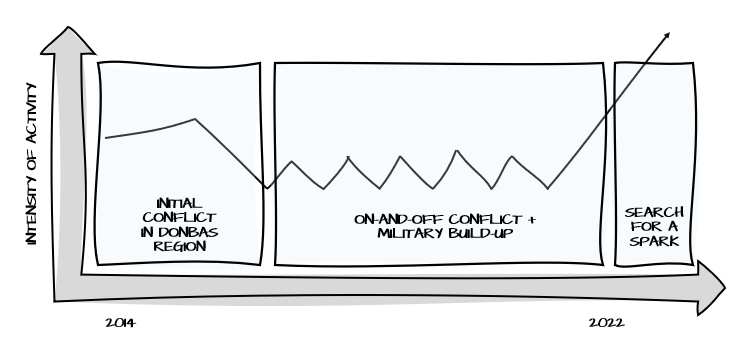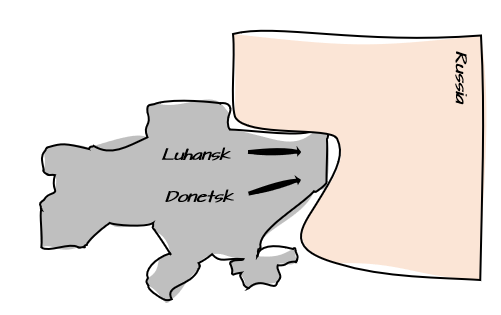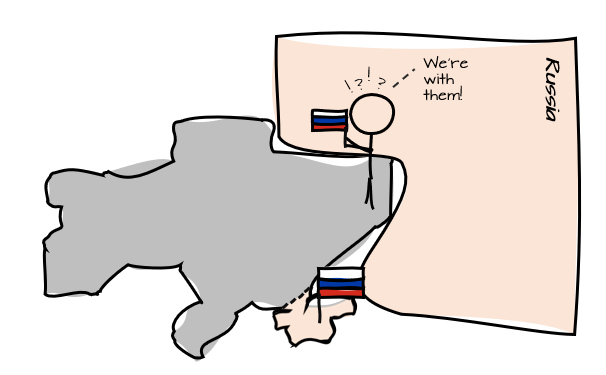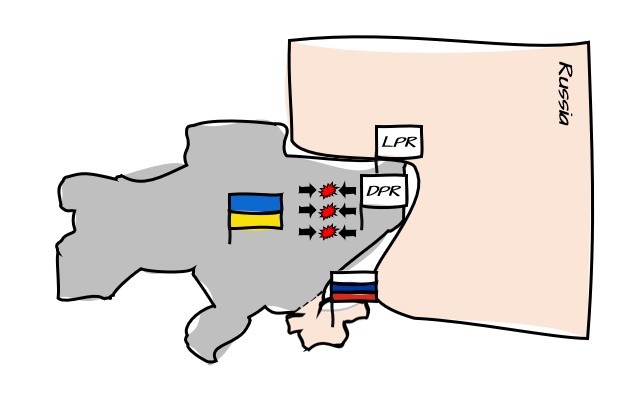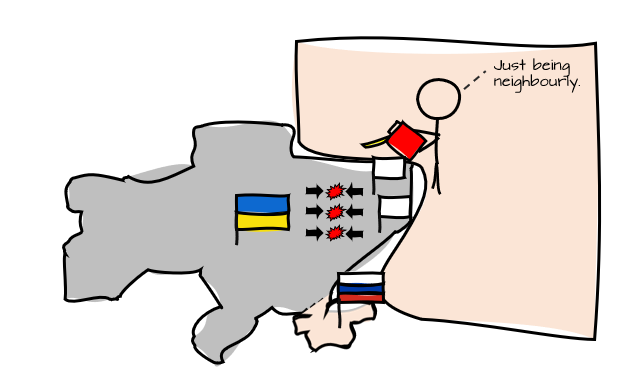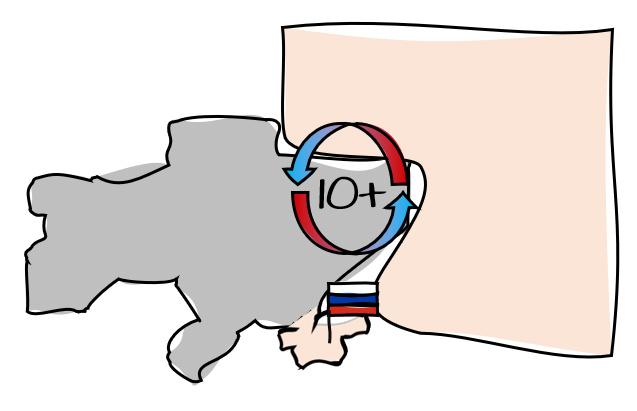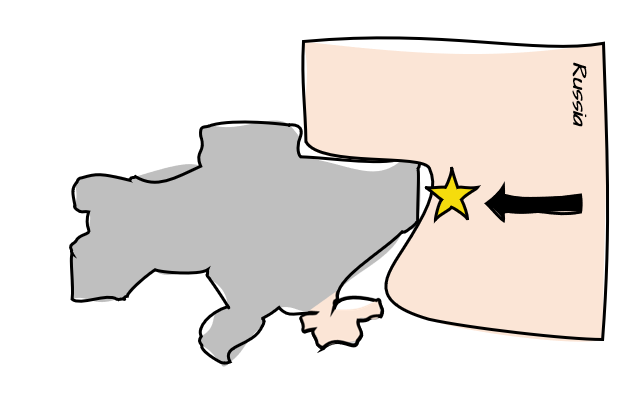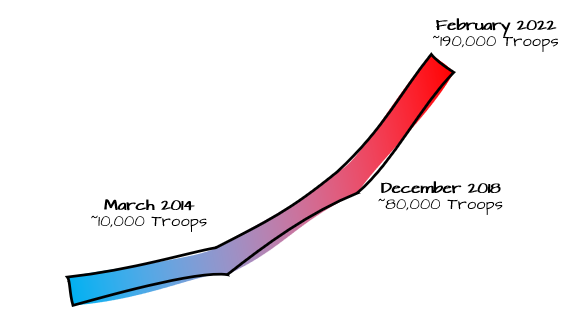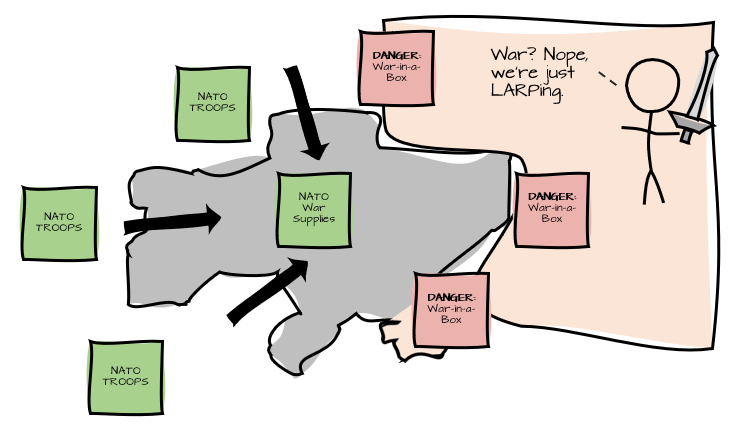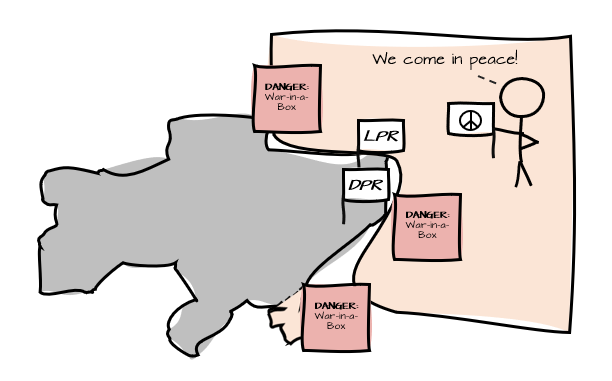So what’s happening in Ukraine? Part 3: The ramp up to the invasion
This is the third post in a series about the situation in Ukraine; they are chronological, so if you are just joining us, I’d start here: Part 1: How did we get here?
This series is not meant to be a definitive history, nor a comprehensive analysis of the conflict or either country. The goal is to help simplify a complex and important topic and provide readers with a baseline appreciation for the situation.
In the last post we focused on Russia’s annexation of Crimea.
You can think of the 2022 invasion as an extension of that conflict.
While for many of us, the invasion itself may be the first time we were introduced to the conflicts in the region, it is important to know that for Ukraine, this “Russo-Ukrainian” war actually began in 2014 in the Donbas region of eastern Ukraine.
Think of the overall situation like this:
To share an overview of what happened, break the timeline into 3 stages.
The first stage we’ll focus on is what happened immediately after the annexation.
INITIAL CONFLICT IN THE DONBAS REGION
The Donbas region is made up of two oblasts (think provinces in Canada, or states in the USA) that border Russia: Donetsk and Luhansk.
Following the 2014 popular revolutions that led to the pro-Russian government being deposed, protests by pro-Russian, anti-government separatists took place in the Donetsk and Luhansk oblasts.
These protests began around the same time as the annexation of Crimea.
These separatists declared the oblasts as independent countries, proclaiming them the Donetsk and Luhansk People’s Republics (DPR and LPR, respectively).
The armed separatist groups then seized government buildings throughout the Donbas, leading to armed conflict with the Ukrainian government.
While the initial protests may have been native expression of discontent with the new Ukrainian government, Russia quickly acted to use these civil conflicts to their advantage.
Many Russian citizens were in leadership positions in the separatist movement, and Russian military materials and volunteers found their way to the region to bolster the oblasts’ struggles against the Ukrainian government.
ON-AND-OFF CONFLICT + MILITARY BUILD-UP
Eventually a cease-fire agreement was reached between the governments of Ukraine, Russia, and the separatists in September 2014, which led to a significant reduction in fighting in the region
Unfortunately, the cease-fire did not last as the separatist forces began new offenses in January 2015, which led to the complete collapse of the agreement and a return to larger engagements
Since the start of the conflict there have been more than 10 cease-fire agreements that have had mixed results, but none were ultimately successful in stopping hostilities
We’ll come back to this region in a moment. For now, let’s look at what was occurring on the other side of the border during this conflict.
During the periods we’ve already covered, Russia had for the most part been incrementally increasing their military presence along the border of Ukraine, but really ramped up in late 2021/ early 2022.
Here is how quickly Russia’s troop deployment escalated.
If it isn’t intuitive that this is a lot of firepower, know that the country of Ukraine has roughly 170,000 active-duty troops in total.
During this build-up Putin rejected claims that Russia was preparing for an invasion of Ukraine calling the idea “alarmist”.
Western countries weren’t buying it, and responded by sending their own troops to secure the borders of NATO countries in the region, including Poland, Latvia, Lithuania, and Estonia.
Additionally, NATO countries provided a massive amount of medical and military support to Ukraine, including weapons, ammunition, radio systems, and medical equipment
By February 2022, Russia had deployed nearly 200,000 troops to the eastern border, the Crimean Peninsula, and even along the Ukrainian border of neighbouring Belarus. The troops, combined with the necessary logistics and supplies were a clear signal to the world that something big was on the horizon
THE SEARCH FOR A SPARK
Ukrainian and NATO strategists were predicting that Russia would be searching for a justification to invade Ukraine now that its armies were in position.
It was assumed that this justification would likely come in the form of a “false-flag” operation, which is an act committed with the intent of disguising the actual source of responsibility and pinning blame on another party.
On an almost daily basis throughout February, Western intelligence agencies were publicly broadcasting their findings of predicted false-flag operations that Russia was planning to take. This helped to greatly reduce the credibility of any such claims that the Russian government would make.
As the false flag plans weren’t working as intended, Russia chose a different path.
On 21 February, Putin formally recognized the independence of the Donetsk and Luhansk People’s Republics and began advancing Russian troops into the contested regions for what he called a “peacekeeping mission”.
On 23 February, during an emergency meeting of the UN Security Council, Putin announced that he had authorized a “special military operation” in Eastern Ukraine.
The purposes of the operation – according to him – were twofold:
The majority of the international community quickly rejected these narratives as baseless and without merit
Within minutes of Putin’s address, explosions were reported in cities across Ukraine.
The invasion had begun.
Has this series been helpful to you? Share with your network below:

